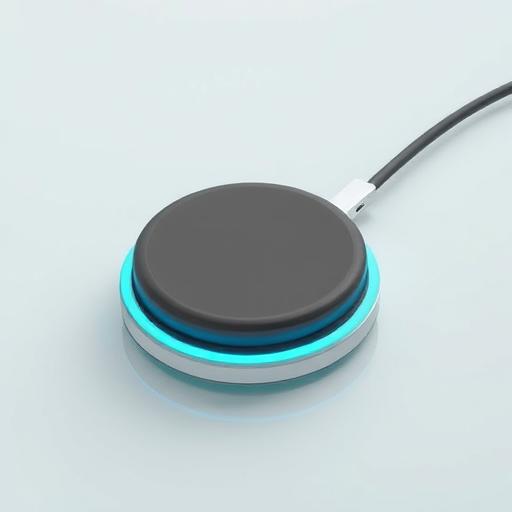Wireless charging technology has revolutionized the way we power our devices, offering a convenient and cable-free experience. With the growing popularity of wireless charging, it’s now common to find devices like smartphones, earbuds, and smartwatches that support this technology. As wireless charging becomes increasingly ubiquitous, it’s essential to understand the science and functionality behind it. In this blog post, we’ll delve into the world of wireless charging, exploring how it works, its benefits and limitations, and what the future holds for this innovative technology.
Step-by-Step Process
Induction Field
A transmitter coil generates an alternating electromagnetic field.
Energy Transfer
The field induces current in the receiver coil via electromagnetic induction.
Rectification
AC current is converted to DC by a rectifier circuit.
Voltage Regulation
Voltage is adjusted to match the device's charging requirements.
Power Delivery
Stable DC power is sent to the device's battery for charging.
Process infographic for How Do Wireless Charging Gadgets Work
The Science Behind Wireless Charging
Electromagnetic Induction – The Core Principle
Wireless charging relies on the principle of electromagnetic induction, discovered by Michael Faraday in 1831. This phenomenon occurs when an electric current generates a magnetic field, which can induce another electric current in a nearby conductor. In the context of wireless charging, electromagnetic induction enables the transfer of energy between a transmitter (charging pad) and a receiver (device coil). The transmitter coil generates an electromagnetic field, which is then converted back into electrical energy by the receiver coil.
Key Components of Wireless Charging Systems
A wireless charging system consists of two primary components: the transmitter (charging pad or stand) and the receiver (device coil). The transmitter generates an electromagnetic field, while the receiver converts this field back into electrical energy. There are two types of wireless charging systems: resonance and inductive charging. Inductive charging, also known as Qi charging, is the most common method used for smartphones and small gadgets. Resonance charging, on the other hand, allows for charging at a slightly greater distance and is used in some automotive and furniture-integrated systems.
How Wireless Charging Works Step-by-Step
Power Transfer Process
The power transfer process in wireless charging involves several steps. First, the charging pad emits an alternating current (AC), which generates an electromagnetic field. The device’s receiver coil then converts this field back into an AC, which is subsequently converted into usable direct current (DC) by a charging controller. The charging controller regulates power delivery to ensure safe and efficient charging.
Alignment and Efficiency Considerations
Proper device placement on the charging pad is crucial for efficient wireless charging. The distance and angle between the device and the charging pad can affect charging speed and efficiency. To ensure compatibility and optimal performance, many wireless chargers adhere to the Qi certification standard. This standard guarantees that devices and chargers meet specific requirements for safe and efficient wireless charging.

Types of Wireless Charging Technologies
Inductive Charging (Qi Standard)
Inductive charging, also known as Qi charging, is the most common method used for smartphones and small gadgets. This technology uses a coil in the charging pad to generate an electromagnetic field, which induces an electric current in the device’s receiver coil. Inductive charging has limitations, including a short range and the need for precise alignment.
Resonant Charging (Extended Range)
Resonant charging allows for charging at a slightly greater distance than inductive charging. This technology uses a resonant coil in the charging pad and the device to enhance energy transfer. Resonant charging is used in some automotive and furniture-integrated systems.
Future Developments (Radio Frequency & Laser Charging)
Researchers are exploring new wireless charging technologies, including radio frequency (RF) and laser-based charging. RF charging uses radio waves to transmit energy, potentially allowing for wireless charging over longer distances. Laser-based charging uses a laser beam to transmit energy, which can be more efficient and safer than RF charging.
Advantages and Disadvantages of Wireless Charging
Benefits of Wireless Charging
Wireless charging offers several benefits, including convenience, reduced wear and tear on charging ports, and a cleaner setup. With wireless charging, you can simply place your device on a charging pad, eliminating the need for cables.
Drawbacks and Limitations
Despite its benefits, wireless charging has some drawbacks. These include slower charging speeds compared to wired methods, potential for overheating and reduced battery lifespan, and higher energy consumption due to inefficiency.
Common Myths About Wireless Charging
There are several common myths about wireless charging. One myth is that wireless charging harms your battery. However, as long as you use a certified charger and follow manufacturer guidelines, wireless charging is safe for your battery. Another myth is that all wireless chargers are the same. However, different wireless chargers have varying levels of quality and compatibility. A third myth is that wireless charging is only for phones. However, many devices, including earbuds and smartwatches, support wireless charging.
Conclusion
In conclusion, wireless charging technology has come a long way, offering a convenient and cable-free experience. By understanding the science and functionality behind wireless charging, you can make the most of this innovative technology. With its benefits, including convenience and reduced wear and tear on charging ports, wireless charging is an attractive option for many device users.
FAQ Section
- Q: Can I use any wireless charger with my phone?
- Q: Does wireless charging damage my phone’s battery?
A: Not necessarily—ensure your device supports Qi wireless charging and check compatibility.
A: No, as long as you use a certified charger and follow manufacturer guidelines.
A: Possible reasons include misalignment, low-quality charger, or software settings.

A: Some advanced chargers support multi-device charging, but not all.

A: Initially, yes, but it eliminates the need for replacement cables over time.
